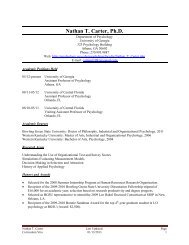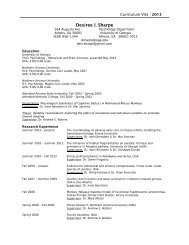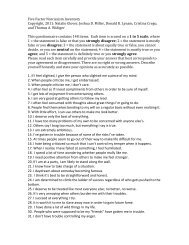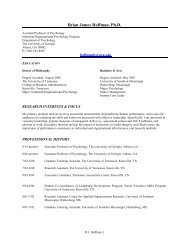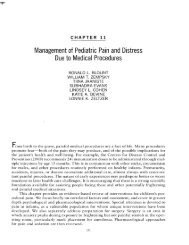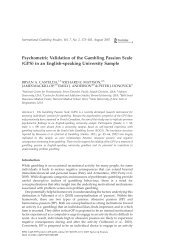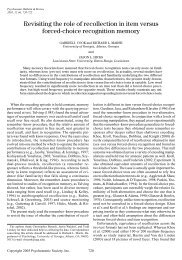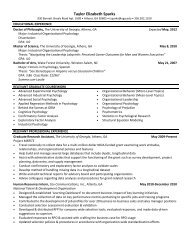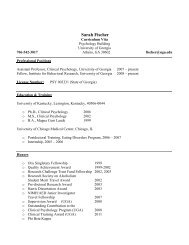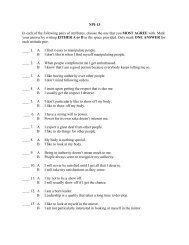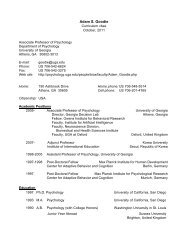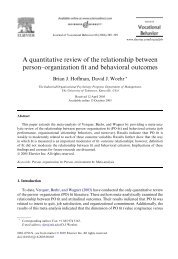The Child-Adult Medical Procedure Interaction Scale-Revised: An ...
The Child-Adult Medical Procedure Interaction Scale-Revised: An ...
The Child-Adult Medical Procedure Interaction Scale-Revised: An ...
You also want an ePaper? Increase the reach of your titles
YUMPU automatically turns print PDFs into web optimized ePapers that Google loves.
76 Blount et at.<strong>The</strong>refore, the purpose of this study is to assess the validity of the CAMPIS-R byinvestigating its association with multiple observational, child self-report, parentreport, and staff report measures of coping- and distress-related constructs.<strong>The</strong> hypotheses were that the CAMPIS-R <strong>Child</strong> Coping category would benegatively correlated with other observational measures, as well as with child,parent, and staff reports of distress, fear, and pain. It was predicted that <strong>Child</strong>Coping would positively correlate with an observational measure of children'sapproach coping behaviors, as opposed to avoidance coping; parents' rating oftheir ability to help their child; and with nurses' ratings of child cooperation.Also, CAMPIS-R <strong>Child</strong> Distress was expected to positively relate to other observationalmeasures, and child, parent, and staff reports of distress, fear, and pain.It was hypothesized that <strong>Child</strong> Distress would negatively correlate with children'sapproach behaviors, parents' rating of their ability to help their child, andwith nurses' ratings of cooperation. <strong>The</strong> CAMPIS-R parent code of CopingPromoting, because of its positive associations with CAMPIS coded child Copingin previous investigations, was expected to negatively correlate with observationalmeasures and child, parent, and staff reports of child distress, fear, andpain. It was predicted that parents' Coping Promoting behavior would positivelycorrelate with children's approach behaviors, parents' ratings of their ability tohelp their child, and with nurses' ratings of child cooperation. Conversely, parents'Distress Promoting behaviors, because of their positive associations withchild Distress in previous investigations, were expected to positively relate toobservational and child, parent, and staff reports of child distress, fear, and pain,and negatively relate to children's approach behaviors, parents' ratings of theirability to help their child, and with nurses' ratings of child cooperation. Staffs'behaviors were expected to relate to the validity measures in the same way as theparents' behaviors. For the CAMPIS-R child, parent, and staff Neutral behaviorcodes, few to no significant correlations were expected with the validity measures,as they are viewed as having little to no association with children's copingand distress.METHODParticipants<strong>The</strong> subjects were 77 children, ages 4-7 years (M = 6 years, 2 months,SD = 8.5 months), and their mothers who reported to a county health departmentfor immunizations prior to attending public school. <strong>The</strong> health departmentserved a broad range of families in the catchment district. <strong>The</strong>re were 36boys and 41 girls. Of the children 67 were Caucasian, 9 were African American,and 1 was from another ethnic group. Informed consent was obtained



